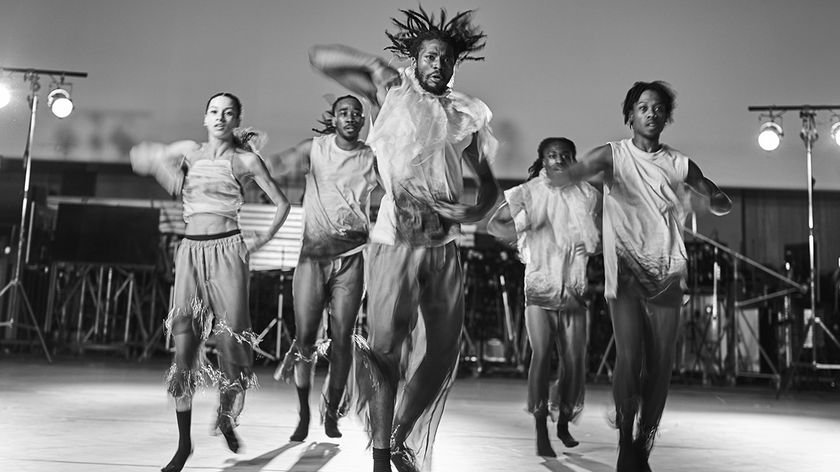Electric guitarists have never had it so good when it comes to recording - there's a whole host of great amp and effects modelling software programs available that allow you to have access to a virtual dream rig for recording - and at a bargain price to boot. But for recording acoustics it's a very different story - it's old-school.
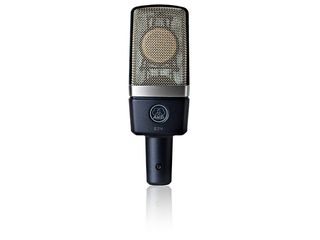
Preparations
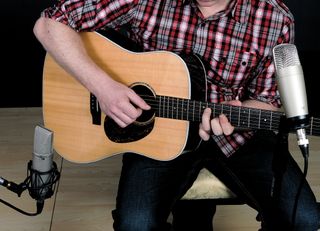
For optimum and more full-bodied results when capturing your acoustic guitar's tone, there's still nothing that rivals mic'ing it. Before we get to that, let's be prepared - correct action on your guitar is a must to ensure there's minimal buzzing on your recording, and if you're layering different acoustic tracks the subtlety of a thin plectrum is also beneficial.
Be aware of loose clothing, belt buckles and buttons that could knock on the guitar - this can be picked up by the mic. Also the room you're playing in is very important - hard floors and surfaces can provide a natural 'live' sound.
Experiment - if you're playing in a carpeted room you could try laying a square of hard material where you're playing - or even setting up in the bathroom and running your cables out from there. This is where recording on a laptop is real advantage, because you can take it anywhere.
Setup 1: Mic at the 12th fret
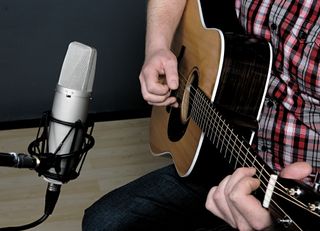
Firstly, your choice of mic is of paramount importance. We'd recommend using one of the many inexpensive condenser mics from the likes of SE, Shure, Rode, Audio-Technica, Samson and Sontronics.
Get the MusicRadar Newsletter
Want all the hottest music and gear news, reviews, deals, features and more, direct to your inbox? Sign up here.
You can get a reasonable result from a normal dynamic mic, but they lack both the sensitivity and frequency response to get the best from your acoustic sound.
Secondly, we're not going to just mic sound from the guitar's soundhole - the results would be too bassy. Both low-end and high-end tone emanates from your acoustic, but from different places. The low-end is mainly around the soundhole area while the higher end sounds will be around the area of the 12th fret.
This is usually the position for a one-mic recording set-up, with the mic around 40cm from the guitar, positioned at a height slightly higher than the neck and pointing down towards the 12th fret. Listen through headphones and check your monitors to make slight adjustments as required to get the best results - the variable factors of room, individual guitar, playing style and mic type will come into play. Usually the further away you place the mic from the guitar, the more room ambience (reverb) will come into play.
Setup 2: Two-mics

If you want a fuller sound - closer to what you hear and with options for mixing - you can try a two-mic set-up. Keeping the 12th fret mic positioned, set up a second condenser mic at the lower bout of the acoustic and pointing it towards the bridge.
Be careful to keep both mics a similar distance from the guitar - there can be phasing issues if the difference is significant between the two signals: experiment.
Alternatively, try sitting facing a corner (don't worry, you haven't done anything wrong) and firing two mics over your shoulders for a bassier element to the sound. Word is that some of the old blues guys did it that way.
It's worth experimenting with two mics, the main advantage being that you can capture different elements of your acoustic tone - high- and low-end frequencies - and then combine them to your preference at the mixing stage.
Always remember that getting a good recorded sound with an acoustic can take a fair bit of time - be prepared to tweak the positioning, listen, evaluate and position again if necessary. Patience is a virtue and the reward is a sound you'll want to listen back to for years.
Remember: Experimenting with compression can make a radical difference to the dynamics of your recorded tone.

Rob is the Reviews Editor for GuitarWorld.com and MusicRadar guitars, so spends most of his waking hours (and beyond) thinking about and trying the latest gear while making sure our reviews team is giving you thorough and honest tests of it. He's worked for guitar mags and sites as a writer and editor for nearly 20 years but still winces at the thought of restringing anything with a Floyd Rose.
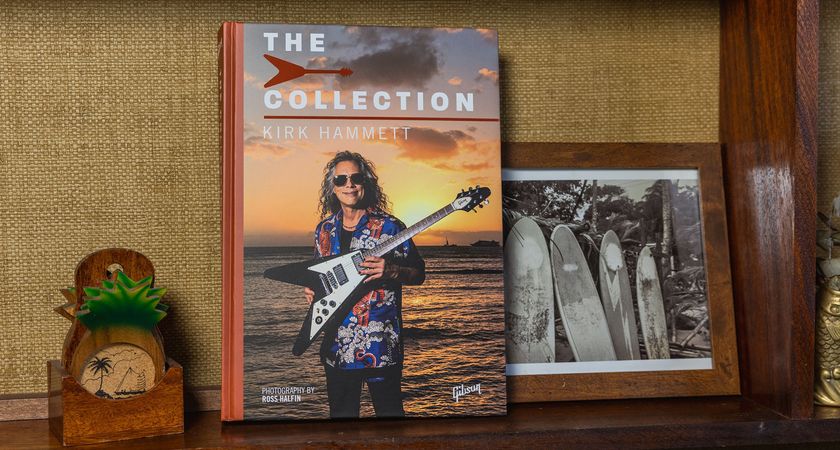
“The deepest-ever dive into the Metallica star’s eclectic guitar collection”: Kirk Hammett and Gibson Publishing team up for epic coffee-table book
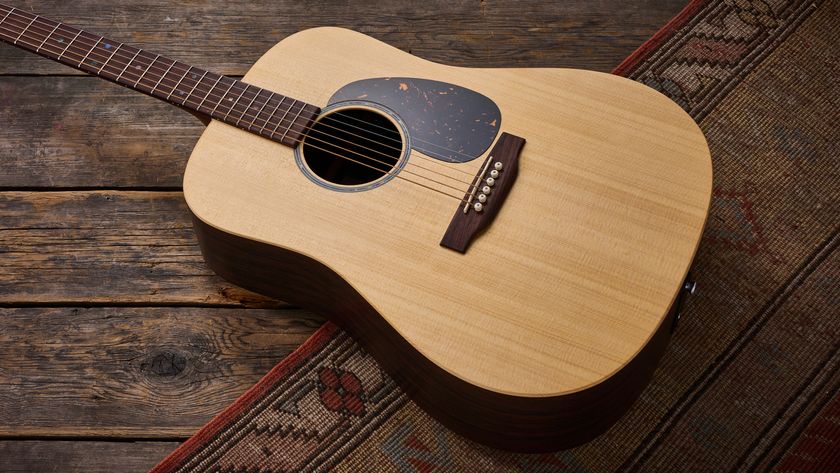
“While it might not be the vintage D-28 of your dreams, this is a Martin you can be proud of”: Martin X Series Remastered D-X2E Brazilian review










